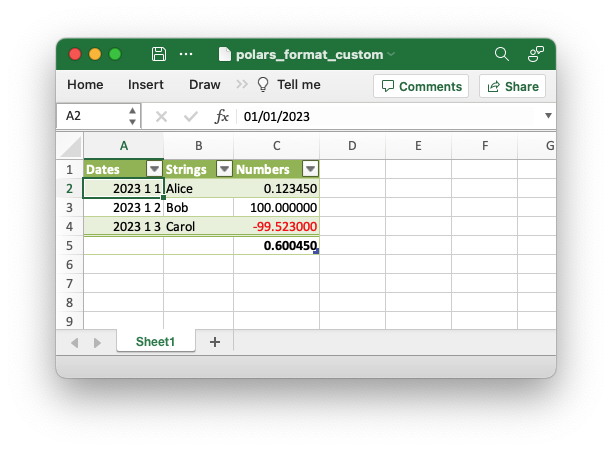Example: Polars custom format example#
A simple example of converting a Polars dataframe to an xlsx file with custom formatting of the worksheet table. See Working with Polars and XlsxWriter for more details.

##############################################################################
#
# A simple example of converting a Polars dataframe to an xlsx file with
# custom formatting of the worksheet table.
#
# SPDX-License-Identifier: BSD-2-Clause
# Copyright 2013-2024, John McNamara, jmcnamara@cpan.org
#
from datetime import date
import polars as pl
# Create a Pandas dataframe with some sample data.
df = pl.DataFrame(
{
"Dates": [date(2023, 1, 1), date(2023, 1, 2), date(2023, 1, 3)],
"Strings": ["Alice", "Bob", "Carol"],
"Numbers": [0.12345, 100, -99.523],
}
)
# Write the dataframe to a new Excel file with formatting options.
df.write_excel(
workbook="polars_format_custom.xlsx",
# Set an alternative table style.
table_style="Table Style Medium 4",
# See the floating point precision for reals.
float_precision=6,
# Set an alternative number/date format for Polar Date types.
dtype_formats={pl.Date: "yyyy mm dd;@"},
# Add totals to the numeric columns.
column_totals=True,
# Autofit the column widths.
autofit=True,
)